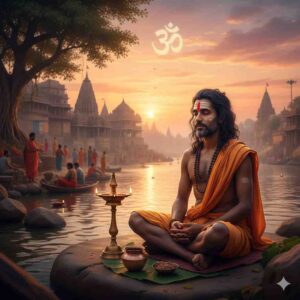Hinduism, as one of the world’s oldest and most intricate systems of thought, is anchored in a vast array of sacred texts. Central to this framework are the Vedas and the Shastras, two pillars of Hindu literature that guide spiritual and practical life. While they share foundational connections, they differ in purpose, scope, and expression. Understanding whether they convey the same philosophical teachings requires delving into their origins, objectives, and interpretations.
The Vedas: Universal Truths and Spiritual Foundations
The Vedas areshrutitexts—divinely revealed knowledge considered eternal and immutable. They are the ultimate source of spiritual and philosophical teachings in Hinduism. Comprising four main texts (Rigveda, Samaveda, Yajurveda, and Atharvaveda), the Vedas explore:
- Cosmic Principles: Concepts like rita (cosmic order) and the unity of existence (Ekam Sat Vipra Bahudha Vadanti, “Truth is one, the wise call it by many names”).
- Self and Ultimate Reality: Philosophical inquiries into the nature of the self (atman) and its relationship with the ultimate reality (Brahman).
- Sacrificial Rituals (Yajna): The importance of maintaining harmony between the individual, society, and the cosmos.
The Vedas emphasize liberation (moksha) through spiritual knowledge, meditation, and rituals, offering timeless principles that transcend cultural and temporal boundaries.
The Shastras: Practical Application of Vedic Wisdom
The Shastras, categorized assmriti(remembered), are derived from the Vedas but are not divinely revealed. They serve as interpretative and practical manuals for applying Vedic principles in various aspects of life. Major Shastras include:
- Dharma Shastras: Ethical and legal codes like the Manusmriti and Yajnavalkya Smriti.
- Arthashastra: A treatise on governance, economics, and political strategy by Kautilya (Chanakya).
- Yoga Shastras: Practical guides to physical and spiritual disciplines, such as Patanjali’s Yoga Sutras.
- Ayurveda Shastras: Manuals on holistic health and medicine.
The Shastras focus ondharma(duty and righteousness) and the practical dimensions of life, adapting the abstract teachings of the Vedas to societal needs.
Philosophical Overlap and Divergence
While the Vedas and Shastras share common philosophical roots, their teachings differ in emphasis and application.
- Core Philosophical Themes:
Both texts explore fundamental principles like dharma, karma (action and its consequences), and moksha(liberation). However, the Vedas focus on universal truths and transcendental knowledge, while the Shastras translate these into specific guidelines for ethical living and governance. - Approach to Rituals and Ethics:
- The Vedas emphasize cosmic and spiritual harmony through rituals and meditation.
- The Shastras provide detailed instructions for performing these rituals and define moral duties based on one’s role in society.
- Adaptability vs. Eternity:
- The Vedas are eternal and unchanging, offering timeless wisdom.
- The Shastras are dynamic and adaptable, evolving with societal changes to remain relevant.
Critiques and Challenges
The interplay between Vedas and Shastras has sparked debates about authority and interpretation. Critics argue that the Shastras, being human interpretations, sometimes diverge from the inclusive and universal philosophy of the Vedas. For instance, elements of theManusmritihave faced criticism for perpetuating caste hierarchies and gender inequality, which are not explicitly upheld in the Vedic worldview.
This divergence underscores the importance of contextualizing Shastric teachings within their historical and cultural milieu, while always grounding them in the universal principles of the Vedas.
Relevance in Contemporary Times
In modern times, the philosophical teachings of the Vedas inspire spiritual seekers globally, while the Shastras offer insights into practical ethics, governance, and holistic well-being. Institutions like the Indian Council for Historical Research (ICHR) and UNESCO have worked to preserve and disseminate these texts, ensuring their continued relevance.
Conclusion
While the Vedas and Shastras do not convey identical philosophical teachings, they complement each other. The Vedas provide the spiritual and cosmic framework, offering universal principles of truth and liberation, while the Shastras adapt these teachings to the complexities of daily life. Together, they form a comprehensive system that bridges transcendental wisdom and practical living, ensuring that philosophy is not only understood but lived. By appreciating their interplay, we gain a deeper understanding of Hindu thought and its enduring relevance in a rapidly changing world.













